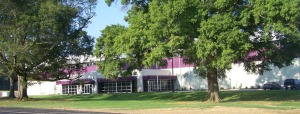Blog Archives
When and Why Ion Nitriding/Nitrocarburizing Makes Good Sense
When and Why Ion Nitriding/Nitrocarburizing Makes Good Sense
Advanced Heat Treat staff Dr. Edward Roliński and Gary Sharp authored this article from Industrial Heating magazine, August 11, 2005:
Ion, or plasma, nitriding has been studied and used industrially for more than 40 years [1-8], but the technology has not been used to its full potential. Ion nitriding/nitrocarburizing is a low temperature (800-1100˚F, or 430-595˚C) process, which results in little or no distortion of the treated parts even if significant residual compressive stress is induced to the surface layer of the treated products. The ion nitriding process also has been referred to by other surface treating characteristics including plasma, vacuum, diffusion, low nitriding potential, passive surfaces activating, easy-to-control structure and pollution-free processes. These process characteristics with the exception of the low nitriding potential concept are discussed in the literature.”
Click here to read the entire article:
http://www.industrialheating.com/Articles/Feature_Article/f022e50797cb7010VgnVCM100000f932a8c0
Learn more about the authors here www.ahtweb.com
Case Depth Terms
When applying a heat treatment, such as ion nitriding, to a part, it is important to know the following case depth terms:
Effective Case Depth (ECD):
The distance from the surface of a hardened case where a specified level of hardness is maintained (typically 50 HRC eqv.).
Total Case Depth (TCD):
The distance from the surface of a hardened case to a point where differences in physical properties of the case and core are no longer distinguished (visual or hardness method).
For example:
 For more information, visit www.ahtweb.com.
For more information, visit www.ahtweb.com.
Honda To Expand Production Of Light Trucks, Engines At Alabama Plant
Honda To Expand Production Of Light Trucks, Engines At Alabama Plant.
Bloomberg News (11/15, Ohnsman) reports, “Honda Motor Co., Japan’s third- largest automaker, will spend $84 million and hire 100 more workers to expand production of light trucks and engines at its assembly plant in Alabama.” In a statement, Honda said that “the investment will boost annual capacity for the Lincoln, Alabama, plant to 340,000 vehicles and engines by 2013 from 300,000 now.” Bloomberg News notes, “Asian automakers including Honda are expanding output capacity in North America as US sales recover from a recession in 2008 and 2009. Demand for new cars and trucks grew 10 percent this year through October, and most companies and analysts are forecasting total sales of 12.5 million to 13 million vehicles in 2011.”
The AP (11/15) reports, “The $1.5 billion plant began production with the Odyssey minivan. The plant employs about 4,000 people and is the sole North American producer of the Odyssey, the Pilot SUV and the Ridgeline pickup.”
The Birmingham Business Journal (11/15, Poe, Subscription Publication) reports, “The latest investment, which brings Honda’s total investment this year up to $275 million and 140 jobs, is tied to the addition of the Acura MDX luxury SUV to the plant’s production lineup, the company said.”
On its website, WLTZ-TV Columbus, GA (11/15) notes, “In 2013, the Lincoln plant will start making the luxury Acura MDX sport utility vehicle.”
Also covering the story are the Anniston Star (11/15, McCreless), WVTM-TV Birmingham, AL (11/15, Jackson) and other media sources.
Read the article here: http://www.businessweek.com/news/2011-11-16/honda-expanding-alabama-plant-to-lift-light-truck-engine-output.html
Did you know Advanced Heat Treat Corp. has a location in Alabama?
The Cullman Facility is located at: 1545 County Rd. 222 Cullman, AL 35057 and specializes in heat treat services such as: Ion Nitriding, Ferritic Carburizing, Stress Relieve, Oxidation Treatment, Duplex Hardening, Assembly, Cleaning Applications, Metallurgical Services & Consultation, Tempering/Drawing, Polishing, and Failure Analysis.


